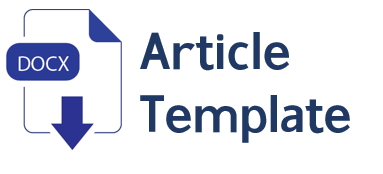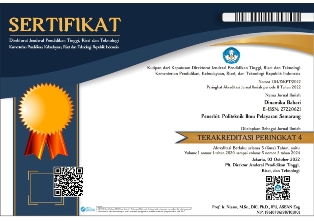Komparasi Perhitungan Kadet Secara Manual Dan Dengan Menggunakan Program – Program Pelayaran Dalam Pelaksanaan Passage Plan
Abstract
To improve the academic ability of a cadet, it is necessary to apply the principles of shipping with the use of computer technology which is accommodated by existing shipping programs on board. In the implementation of a voyage, it always uses a passage plan to make it easier to navigate either flat or electronically. A cadet must really be equipped with the ability to calculate manually and the ability to understand the use of shipping tables and be able to apply it in a computer program. The research method is descriptive. Data collection was carried out by manual calculation of the concept of Flat Sailing using a Mercator map and comparison of the results of calculations with programs on the ship, observation, structured interviews, documentary studies and library research. The purpose of this study was to compare the results of manual calculations and by using shipping programs carried out by cadets in the implementation of the Passage Plan. The results showed that the cadets still did not understand the application of cruise calculation formulas on the projection of the mercator chart or mercator map. Cadets in entering data in a program are still wrong and less thorough so that it will affect the implementation of the passage plan.
Downloads
References
International Chamber of Shipping. (2013). On Board Training Record Book for Officers in Charge of an Engineering Watch (Engine Cadets). Marisec.
Jamil, M. G., & Bhuiyan, Z. (2021). Deep learning elements in maritime simulation programmes: a pedagogical exploration of learner experiences. International Journal of Educational Technology in Higher Education volume 18(18).
Kitada, M. (2021). Women Seafarers: An Analysis of Barriers to Their Employment. In Gekara V.O., Sampson H. (eds) , The World of the Seafarer. WMU Studies in Maritime Affairs, vol 9. Springer, Cham. Springer.
Kofoed, M. S., & McGovney, E. (2019). The Effect of Same-Gender or Same-Race Role Models on Occupation Choice: Evidence from Randomly Assigned Mentors at West Point. J. Human Resources Vol. 54, 430-467.
Kristic, M., Zuskin, S., Brcic, D., & Valcic, S. (2020). Zone of Confidence Impact on Cross Track Limit Determination in ECDIS Passage Planning. Journal of Marine Schince and Engineering 8(8): 566.
Lau, Y.-y., & Ng, A. K. (2015). The motivations and expectations of students pursuing maritime education. WMU Journal of Maritime Affairs , Vol. 14, 313-331.
Lee, J., Dhesi, S., Phillips, I., Jeong, M., & Lee, C. (2021). Korean Maritime Cadets’ Onboard Training Environment Survey. Sustainability, Vol. 13(8).
Li, Z., Ringsberg, J. W., & Rita, F. (2020). A voyage planning tool for ships sailing between Europe and Asia via the Arctic. Ships and Offshore Structures, Vol. 15, S10-S19.
Naus, K., Waz, M., Szymak, P., Gucma, L., & Gucma, M. (2021). Assessment of ship position estimation accuracy based on radar navigation mark echoes identified in an Electronic Navigational Chart. Measurement, Vol. 169.
Sandvik, E., Nielsen, J. B., Asbjornslett, B. E., Pedersen, E., & Fagerholt, K. (2020). Operational sea passage scenario generation for virtual testing of ships using an optimization for simulation approach. Journal of Marine Science and Technology.














